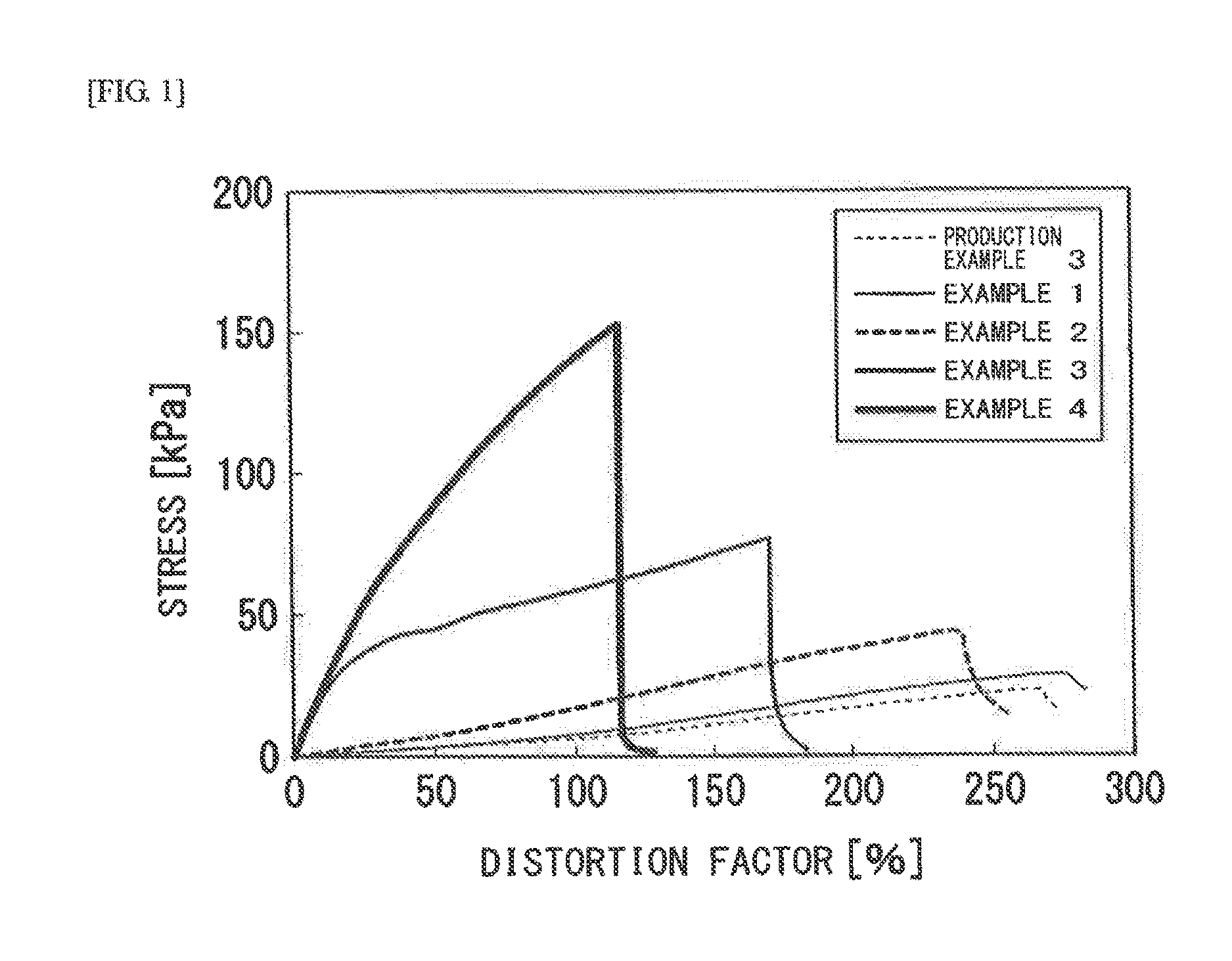Method for producing gel
- Summary
- Abstract
- Description
- Claims
- Application Information
AI Technical Summary
Benefits of technology
Problems solved by technology
Method used
Image
Examples
production example 1
Production of 9% LAPONITE XLG Aqueous Dispersion
[0084]7.5 Parts of low polymerization sodium polyacrylate (JURYMER AC-103, available from TOAGOSEI CO., LTD., weight average molecular weight: 6,000), 3 parts of urea (available from JUNSEI CHEMICAL CO., LTD.), 0.5 parts of phenoxyethanol (available from JUNSEI CHEMICAL CO., LTD.), and 74 parts of water were mixed and stirred at 25° C. until a uniform solution was produced. To the solution, 9 parts of LAPONITE XLG (available from Rockwood Additives Ltd.) was added little by little, the mixture was uniformly dispersed, and 3 parts of 10% aqueous solution of citric acid (available from JUNSEI CHEMICAL CO., LTD.) was then added. The mixture was heated to 80° C. with vigorous stirring, stirred at 80° C. for 30 minutes, and stirred with cooling to 25° C. in an ice-water bath. To the mixture, 3 parts of 10% aqueous solution of citric acid (available from JUNSEI CHEMICAL CO., LTD,) was added, and the mixture was vigorously stirred for 1 hour ...
production example 2
Production of 1.5% Sodium Polyacrylate Aqueous Solution
[0085]3 Parts of urea (available from JUNSEI CHEMICAL CO., LTD.), 0.5 parts of phenoxyethanol (available from JUNSEI CHEMICAL CO., LTD.), and 92.5 parts of water were mixed and stirred at 25° C. until a uniform solution was produced. While this solution was vigorously stirred, 1.5 parts of highly polymerized sodium polyacrylate (VISCOMATE NP-800: available from Showa Denko K.K.) was added little by little, and the mixture was vigorously stirred at 25° C. (for 5 hours) until the highly polymerized sodium polyacrylate was completely dissolved, to obtain a desired product.
production examples 3
Production of Sheet-Shaped Gel 1
[0086]To 6 mL of the 9% LAPONITE XLG aqueous dispersion produced in Production Example 1, 6 mL of water was added, and the mixture was stirred at 25° C. for 10 minutes. To this mixture, 12 mL of the 1.5% sodium polyacrylate aqueous solution produced in Production Example 2 was added, and the mixture was vigorously stirred at 25° C. for 1 minute. The mixture was poured uniformly into a dish with a diameter of 9 cm, covered with a lid, and allowed to stand at 25° C. for 48 hours, to obtain a desired product.
PUM
| Property | Measurement | Unit |
|---|---|---|
| Fraction | aaaaa | aaaaa |
| Fraction | aaaaa | aaaaa |
| Mass | aaaaa | aaaaa |
Abstract
Description
Claims
Application Information
 Login to View More
Login to View More - R&D
- Intellectual Property
- Life Sciences
- Materials
- Tech Scout
- Unparalleled Data Quality
- Higher Quality Content
- 60% Fewer Hallucinations
Browse by: Latest US Patents, China's latest patents, Technical Efficacy Thesaurus, Application Domain, Technology Topic, Popular Technical Reports.
© 2025 PatSnap. All rights reserved.Legal|Privacy policy|Modern Slavery Act Transparency Statement|Sitemap|About US| Contact US: help@patsnap.com

